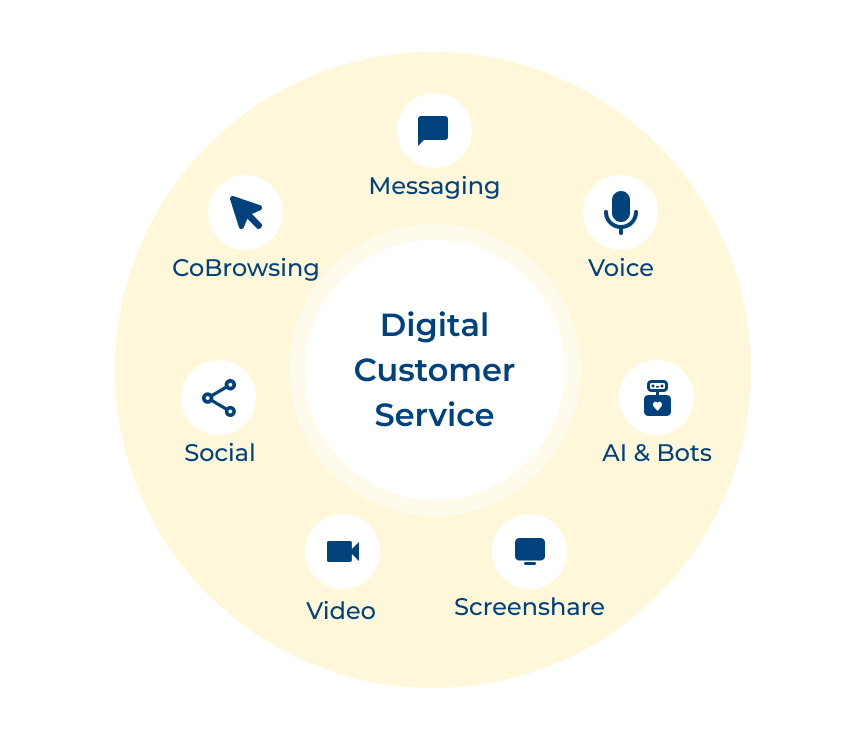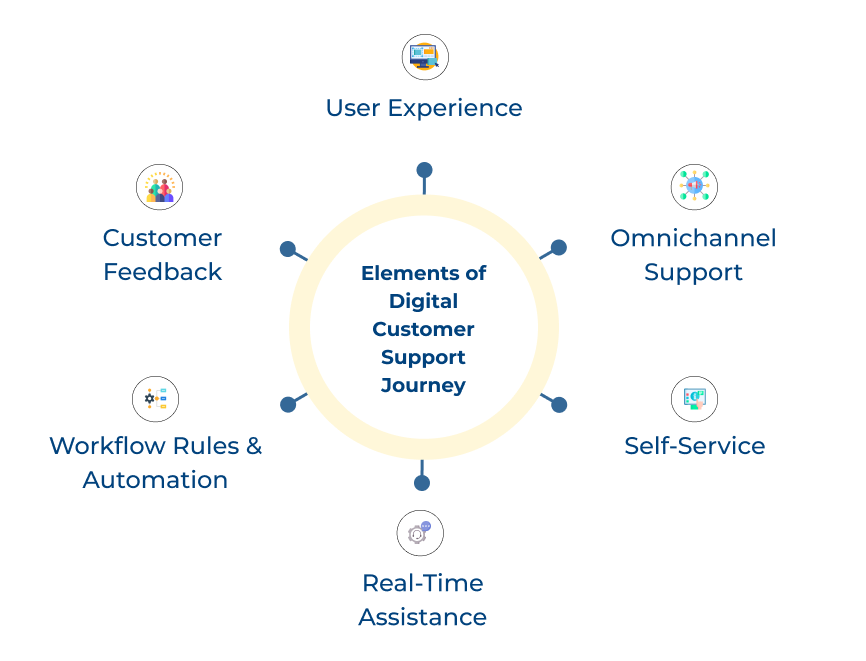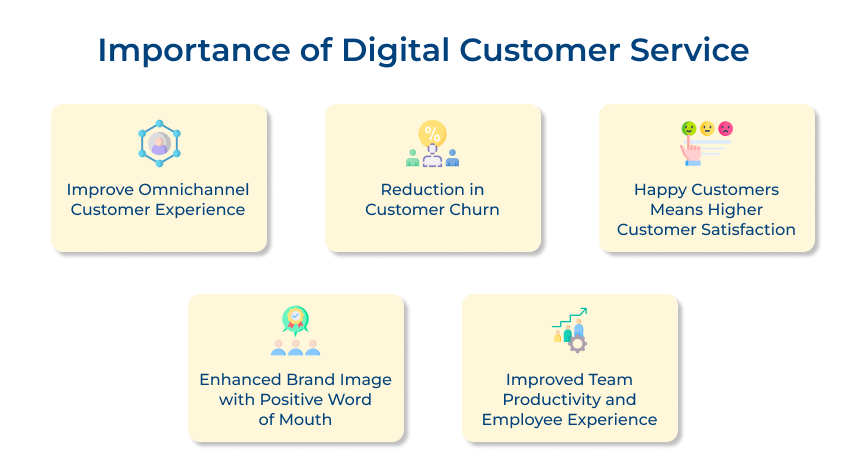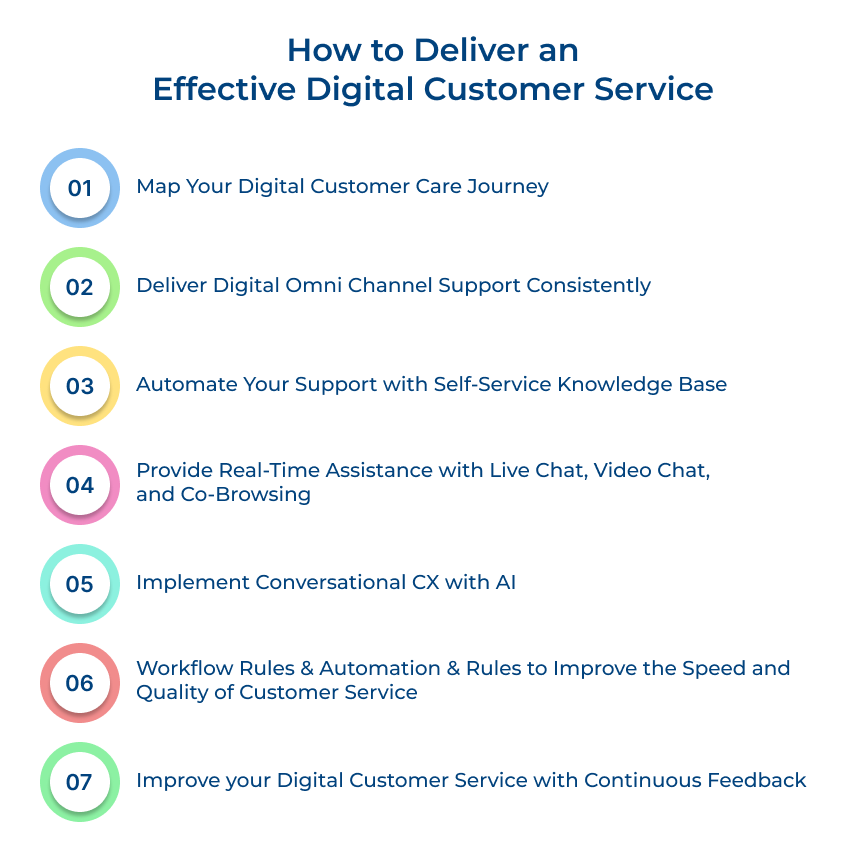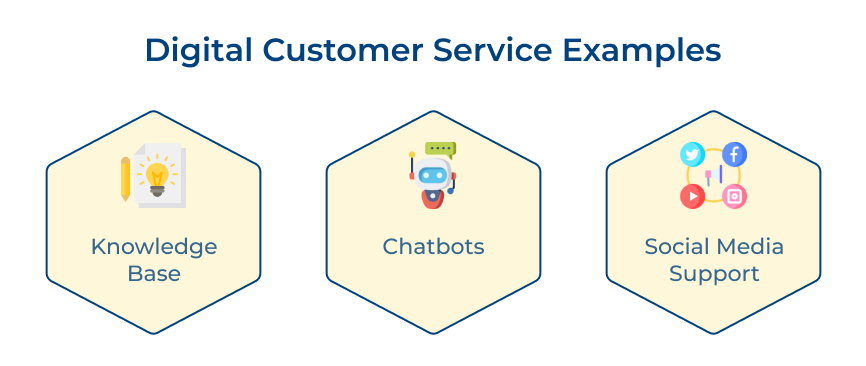1. Map your Digital Customer Care Journey
Mapping out digital customer service solutions is crucial to delivering effective customer service. It involves understanding the different touchpoints a customer may have with the brand and identifying opportunities to improve the customer experience. Mapping the customer journey is not just about knowing where they are, it’s about turning each interaction into an opportunity to enhance their experience. More than 65% of businesses have been using customer journey mapping.
Best practices:
- Identify all touchpoints where a customer may interact with your organization, including email, social media, chat, phone, and your website.
- Gather customer feedback and analyze data to understand their pain points as well as the areas for improvement.
- Prioritize touchpoints based on their importance to the customer and their impact on the customer experience.
- Develop a plan to improve the customer experience at each touchpoint, incorporating the use of technology and other resources as necessary.
2. Deliver Digital Omni Channel Support Consistently
Providing a consistent and seamless customer service experience across all channels is essential to delivering effective digital customer service. It involves having a clear understanding of the support customers need at each touchpoint and providing it in a professional manner. 66% of consumers will spend more with companies that allow them to start a conversation on one channel and pick it up on another without needing to repeat themselves.
Actionable tips:
- Train support agents on the support customers need at each touchpoint and the resources available to assist them.
- Establish clear guidelines for the tone and style of communications, to ensure a consistent customer experience across channels.
- Continuously monitor and evaluate the performance of support agents to ensure they are providing the best possible customer service.
- Provide customers with a mechanism to escalate issues if they are unable to find the support they need through a particular channel.
3. Automate your Support with Self-Service Knowledge Base
A self-service knowledge base can help customers find the information they need quickly and easily. It reduces the need for them to reach out to support agents and improves the overall efficiency of customer service. Self-service platforms also end up saving time for both parties, as customers get their issues resolved without reaching out to the support team. 59% of customers prefer self-service tools for simple questions/issues.
Best practices:
- Ensure that the knowledge base is up-to-date and contains accurate information for customers.
- Use clear language and provide step-by-step instructions where necessary to help customers find what they need.
- Continuously evaluate the effectiveness of the knowledge base and make improvements as needed.
- Provide customers with a mechanism to reach out to support agents if they are unable to find the information they need through the knowledge base.
4. Provide Real-Time Assistance
Providing real-time assistance through channels such as live chat, video chat and co-browsing can help customers get the support they need efficiently. It can also help build trust and improve the overall customer experience. Gone are the days when customers had to reach out to the company and then wait for their reply. Real-time assistance has been widely leveraged by brands across the globe and has become quite the norm.
Best practices for providing real-time assistance:
- Train support agents on the use of live chat, video chat, and co-browsing to ensure they can provide effective support.
- Monitor wait times and response times to ensure that customers are getting the support they need in a timely manner.
- Continuously evaluate the performance of support agents and make improvements as needed.
- Provide customers with a mechanism to escalate issues if they are unable to find the support they need through real-time channels.
5. Implement Conversational CX with AI
Artificial Intelligence (AI) and chatbots can help deliver a more efficient customer service experience by automating routine tasks. It also frees up support agents to handle more complex inquiries. The integration of AI in customer service can also help improve the overall accuracy and consistency of responses the customers get. When used effectively, AI and chatbots can provide a 24/7 support experience, allowing customers to access help whenever they need it.
Actionable tips for using AI and chatbots:
- Evaluate the suitability of AI and chatbots for the business as well as customer needs. Consider factors such as the nature of customer inquiries, the size of the support team and the complexity of the product.
- Train chatbots using a large dataset to ensure accuracy and consistency in responses. It will help prevent frustration and ensure a positive customer experience.
- Continuously evaluate the performance of AI and chatbots. Regularly review customer feedback and analyze data to determine areas for improvement.
- Provide a mechanism for customers to escalate to a human support agent if needed. It will ensure that customers have access to a human support agent if their issue is beyond the capabilities of the chatbot.
6. Workflow Rules & Automation to Improve Quality of Customer Service (QoS)
Implementing clear workflow rules and automating routine tasks can help businesses improving the overall quality of customer service. It can result in a more efficient customer service experience, with faster resolution times and improved customer satisfaction. 80% of marketers saw an increase in the number of leads after using marketing automation software in their process.
Best practices for using workflow rules and automation:
- Evaluate your existing processes and identify areas for improvement. Consider factors such as response times, the number of support agents required to handle inquiries and customer satisfaction levels.
- Implement concise workflow rules to streamline processes. Ensure that all support agents are trained on the new processes and that they understand the rules to follow them.
- Continuously evaluate the effectiveness of workflow rules and automation. Regularly review customer feedback and analyze data to determine areas for improvement.
- Provide a mechanism for customers to provide feedback on the workflow rules and automation. It will help ensure that the rules are working as intended and that the customer experience is positive.
7. Continuous Feedback
Continuous feedback is essential for improving the quality and effectiveness of digital customer support. Regularly seeking and acting upon customer feedback allows brands to ensure that their digital customer service experience is meeting customer expectations. Gathering and analyzing customer feedback should be a regular practice as it will ensure the company is consistently providing top-notch support.
Best practices for continuous feedback:
- Regularly solicit customer feedback through surveys, social media, and other channels.
- Respond to customer feedback in a timely and professional manner.
- Analyze customer feedback data to identify trends and areas for improvement.
- Act on customer feedback by making changes to processes, workflows, and tools to improve digital experiences.
- Continuously monitor and evaluate the impact of changes made in response to customer feedback.
Digital Customer Service Examples
Here are three digital customer service examples that businesses can analyze and draw learnings to deliver a better CX for their customers.






